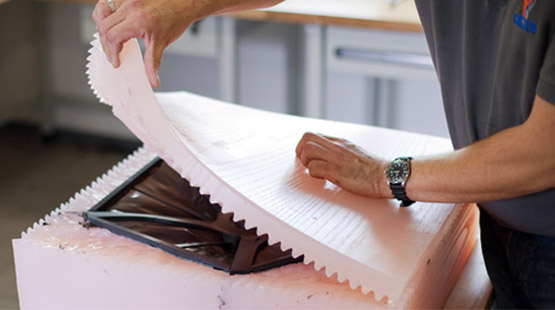There are different types of casting processes used to manufacture parts from metal and polymer material. Sand casting is one of the oldest and cheapest processes while at a higher end there are other processes such as die casting and investment castings. The process is apparently simple. One pours material into a mould and it hardens to form the part. The process is not free of shortcomings. During the casting processes, air may remain in the material and mould leading to the formation of blowholes. These are termed as defects and lead to rejection of parts.
What is vacuum mould casting?
The process begins with the preparation of a master pattern. This is usually made with CNC machines or Stereolithography process. The pattern is polished or given a texture as may be needed. It is checked for dimensional accuracy. The pattern is then suspended in a casting frame. Liquid silicone is applied to the pattern until the desired thickness is achieved. Silicone is then cured in a hot chamber. After it is cured it is cut along a parting line. The master pattern is removed. Technicians then place a funnel and close the mould. The actual casting of polyurethane can take place now.

The process of metal casting is slightly different. Whereas traditional sand casting makes use of sand bonded with molasses, one uses only unbonded sand in a flask that is put inside a vacuum chamber and metal poured in after the vacuum is created.
Advantages of Vacuum Casting
Where low quantities or prototypes are required vacuum casting proves to be ideal. Vacuum casting process does not introduce air holes or gaps in the finished product. The parts so produced have a good finish. When one needs low volumes fast either for prototyping or to meet special needs then the process of vacuum casting is perfect for such applications. It is easier and cheaper to produce master patterns and the silicone moulds, even for complex polyurethane parts. Over moulding is also possible in this process. It is easy to test prototypes and make changes before finalizing a mould for mass production.
Why use Vacuum Casting?
Industries such as automotive need a number of cast parts in their production. If one were to design parts and manufacture them using normal moulding processes and if modifications are required then it becomes and expensive. If one needs only a small quantity of components for special purposes then also vacuum casting is an economical way of producing such parts.
However, it must be kept in mind that this is a slow process and it may be necessary to prepare the silicone mould all over again after vacuum casting 10 to 50 pieces.
Industries such as medical industries, creative art products makers, consumer segments and automotive can benefit from this process. They only need to get high-quality vacuum casting equipment and access the right supplier who not only provides machines but also manufactures high-quality moulds based on CAD designs.
















